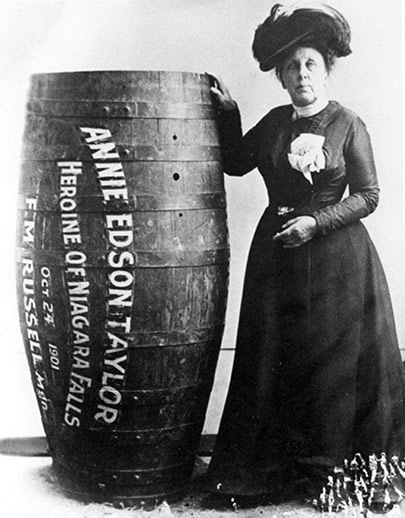
A 30,000-year-old giant virus has been revived from the frozen Siberian tundra, sparking concern that increased mining and oil drilling in rapidly warming northern latitudes could disturb dormant microbial life that could one day prove harmful to man.
The latest find, described online Monday in the Proceedings of the National Academy of Sciences, appears to belong to a new family of mega-viruses that infect only amoeba. But its revival in a laboratory stands as “a proof of principle that we could eventually resurrect active infectious viruses from different periods,” said the study’s lead author, microbiologist Jean-Michel Claverie of Aix-Marseille University in France.
{ LA Times | Continue reading }
photo { John Gutmann, I am the Magic Hand, 1937 }
health, horror |
March 4th, 2014
 Inventor Has Waited 43-Years For Patent Approval
Inventor Has Waited 43-Years For Patent Approval
Man Wakes up in Body Bag at Funeral Home
CEO Ticketed For Running In Central Park Too Early
Teen’s Facebook brag costs dad $80,000 lawsuit settlement
Case against man who texted photo of his tattooed genitals dismissed
Fear suppressing neurons found
Science can predict if a seemingly healthy person will die on the short term, based on 4 biomarkers
Strangers with easier-to-pronounce monikers are deemed more trustworthy
Blind people have more nightmares than those who can see.
Although many attempts have been made, it took until 2003 for the vortex ring scent canon to be developed.
Doctors’ Stethoscopes Can Transmit Bacteria As Easily As Unwashed Hands
…bottles of ChlorOxygen chlorophyll concentrate, which “builds better blood.” Whole Foods: America’s Temple of Pseudoscience
How the global banana industry is killing the world’s favorite fruit
3 Minutes of Tetris Reduces Cravings for Drink, Cigarettes and Food
NY Will Use Birth Control To Wipe Out Mute Swans Instead Of Executing Them
How many healthy animals do zoos put down?
Changing the color of rope used in lobster gear could prevent deadly whale entanglements, researcher says
Macroscopic inspection of feces has been used to investigate primate diet.
The city of Naples, Italy, is implementing a plan to take DNA tests from dog poop to catch people who don’t pick up after their pets
“during the Greco-Roman period, a sponge fixed to a stick (tersorium) was used to clean the buttocks after defecation; the sponge was then replaced in a bucket filled with salt water or vinegar water.”
Military and civilian drones have a crucial weakness that means they can be hacked, Katia Moskvitch discovers, so what might a stolen drone be used for?
How a Hacker Intercepted FBI and Secret Service Calls With Google Maps
 A map of how much the time zones of the world vary from solar time (China is about as big across as the continental United States and has only one huge time zone) [more]
A map of how much the time zones of the world vary from solar time (China is about as big across as the continental United States and has only one huge time zone) [more]
How a 40% decrease in X can be a 6% increase in non-X
Finally, A Strip-Proof Screw
A “web-enabled” toothbrush collects dental data while it cleans your teeth
The 14 synthesizers that shaped modern music
Satanists unveil design for OK statehouse statue [Thanks Tim]
Toy Story: The True Identity of Andy’s Mom
Google Image Search Result for “Exhausted” Printed onto Blanket, 2009, mixed media
Endless pizza
Ronald Wilson Reagan
Why does Daisy get ice cream before Cooper?
Handjob Tutorial and Demonstration
every day the same again |
March 3rd, 2014

The simplest type of human communication is non verbal signals: things like posture, facial expression, gestures, tone of voice. They are in effect contagious: if you are sad, I will feel a little sad, if I then cheer up, you may too. The signals are indications of emotional states and we tend to react to another’s emotional state by a sort of mimicry that puts us in sync with them. We can carry on a type of emotional conversation in this way. Music appears to use this emotional communication – it causes emotions in us without any accompanying semantic messages. It appears to cause that contagion with three aspects: the rhythmic rate, the sound envelope and the timbre of the sound. For example a happy musical message has a fairly fast rhythm, flat loudness envelop with sharp ends, lots of pitch variation and a simple timbre with few harmonics. Language seems to use the same system for emotion, or at least some emotion. The same rhythm, sound envelope and timbre is used in the delivery of oral language and it carries the same emotional signals. Whether it is music or language, this sound specification cuts right past the semantic and cognitive processes and goes straight to the emotional ones. Language seems to share these emotional signals with music but not the semantic meaning that language contains.
{ Neuro-patch | Continue reading }
music, neurosciences |
March 3rd, 2014

Chefs have been using the sensation of chillies and other peppers to spice up their culinary experiments for centuries. But it is only in the last decade or so that scientists have begun to understand how we taste piquant foods. Now they have found the mechanism that not only explains the heat of chillies and wasabi, but also the soothing cooling of flavours like menthol.
The implications of this discovery extend far beyond cuisine. The same mechanisms build the body’s internal thermometer, and some animals even use them to see in the dark. Understand these pathways, and the humble chilli may open new avenues of research for conditions as diverse as chronic pain, obesity and cancer.
{ NewScientist | Continue reading }
food, drinks, restaurants, science |
March 3rd, 2014

Ultracrepidarian (n):”Somebody who gives opinions on subjects they know nothing about.”
Groke (v): “To gaze at somebody while they’re eating in the hope that they’ll give you some of their food.” My dog constantly grokes at me longingly while I eat dinner.
{ BI | Continue reading }
Linguistics, buffoons |
March 3rd, 2014

All you really need to do to seem clairvoyant about [Russia] is to be an utter pessimist. […]
[B]y Stalin’s very conscious design and very deliberate border drawing and population movement, most former Soviet republics are ethnic hodgepodges. So Ukraine has a sizable Russian population. Ditto Estonia, ditto Georgia, ditto Kazakhstan. And, according to Putin’s unspoken doctrine, anywhere Russian citizens are determined to be at risk, Mother Moscow can intercede with force on their behalf.
{ Julia Ioffe | Continue reading }
pipeline |
March 2nd, 2014
This leader came to power in democratic elections, to be sure, but then altered the system from within. For example, the leader had been a common criminal: a rapist and a thief. He found a judge who was willing to misplace documents related to his case. That judge then became the chief justice of the Supreme Court. There were no constitutional objections, subsequently, when the leader asserted ever more power for his presidency.
In power, this leader, this president, remained a thief, but now on a grand, perhaps even unsurpassed, scale. Throughout his country millions of small businessmen and businesswomen found it impossible to keep their firms afloat, thanks to the arbitrary demands of tax authorities. Their profits were taken by the state, and the autonomy that those profits might have given them were denied. Workers in the factories and mines had no means whatsoever of expression their own distress, since any attempt at a strike or even at labor organization would simply have led to their dismissal.
The country, Ukraine, was in effect an oligarchy, where much of the wealth was in the hands of people who could fit in one elevator. But even this sort of pluralism, the presence of more than one very rich person, was too much for the leader, Viktor Yanukovych. He wanted to be not only the president but the oligarch-in-chief. His son, a dentist, was suddenly one of the wealthiest men in Europe. Tens of billions of dollars simply disappeared from the state budget. Yanukovych built for himself a series of extravagant homes, perhaps the ugliest in architectural history. […]
If a leader steals so much from the people that the state goes bankrupt, then his power is diminished. Yanukovych actually faced this problem last year. […] He needed someone to finance the immediate debts of the Ukrainian state so that his regime would not fall along with it. […] the Ukrainian leader had two options. The first was to begin trade cooperation with the European Union. No doubt an association agreement with the EU would have opened the way for loans. But it also would have meant the risk of the application of the rule of law within Ukraine. The other alternative was to take money from another authoritarian regime, the great neighbor to the east, the Russian Federation.
{ NY Review of Books | Continue reading }
gross, pipeline |
March 2nd, 2014

Today, credit cards are on supersale. Pageler says that means a big breach just happened.
Strangely, platinum credit cards on the site are selling for less money than gold cards. […]
The bots send out emails, and between 5 percent and 10 percent of recipients open the attachment, which lets the crooks in.
{ NPR | Continue reading }
economics, scams and heists, spy & security |
February 21st, 2014

Bitcoin itself may not flourish as a currency, but the underlying technology is beginning to suggest valuable new applications. […]
For example, Namecoin is a system used to create and exchange domain names: the coins contain information about the domain names themselves. Recall that the domain name market has about $3 billion in revenue per year: it’s a good example of a weird, scarce digital resource. And Bitmessage is a Bitcoin-inspired messaging platform that allows for anonymous (or at least pseudonymous) communication. What Namecoin and Bitmessage share is that they allow data to be added to the transaction, making the exchange one not just of perceived value but also of information.
Or take digital art. Larry Smith, a partner at the business architecture consultancy The matix and an analyst with long experience in digital advertising and digital finance, asks us to “imagine digital items that can’t be reproduced.” If we attached a coin identifier to a digital image, Smith says, “we could now call that a unique, one-of-a-kind digital entity.” Media on the Internet—where unlimited copying and sharing has become a scourge to rights holders—would suddenly be provably unique, permanently identified, and attached to an unambiguous monetary value.
{ Technology Review | Continue reading }
cryptocurrency, economics, technology |
February 21st, 2014

Author profiling is a problem of growing importance in applications in forensics, security, and marketing. E.g., from a forensic linguistics perspective one would like being able to know the linguistic profile of the author of a harassing text message (language used by a certain type of people) and identify certain characteristics. Similarly, from a marketing viewpoint, companies may be interested in knowing, on the basis of the analysis of blogs and online product reviews, the demographics of people that like or dislike their products. The focus is on author profiling in social media since we are mainly interested in everyday language and how it reflects basic social and personality processes.
{ PAN | Continue reading }
photos { Neal Barr, Texas Track Club, 1964 }
Linguistics, social networks, technology |
February 21st, 2014

To answer the seemingly simple question “Have I been here before?” we must use our memories of previous experiences to determine if our current location is familiar or novel. In a new study published in the Journal of Neuroscience researchers have identified a region of the hippocampus, called CA2, which is sensitive to even small changes in a familiar context. The results provide the first clue to the contributions of CA2 to memory and may help shed light on why this area is often found to be abnormal in the schizophrenic brain.
{ Function Space | Continue reading }
neurosciences |
February 20th, 2014

Almost half of all disturbing dreams contain primary emotions other than fear, study finds […]
The research also found that men and women tend to have different dreams. Men were “significantly” more likely to report themes involving disaster or calamity as well as insects while women’s dreams were more likely to feature interpersonal conflicts.
{ Telegraph | Continue reading }
related { Use what hotels know about sleeping to build your own dreamland }
genders, psychology, sleep |
February 19th, 2014

The husband and wife team behind the handmade cosmetics company Lush – which this week won a high court battle against Amazon over its use of the word “lush” to sell rival cosmetics – has trademarked the name “Christopher North” as a brand name for a new range of toiletries, which could eventually extend to deodorants and hair removing cream. North is the managing director of Amazon.co.uk.
{ Guardian | Continue reading }
economics, law |
February 19th, 2014

























